We’ve been planting parsley, dill, and fennel for many years — partly for our own use and partly for black swallowtails. We noticed the swallowtails laying eggs on dill more than on the others, but that may be because the dill was in a more noticeable location and we had much more of it since it generously self-sows.
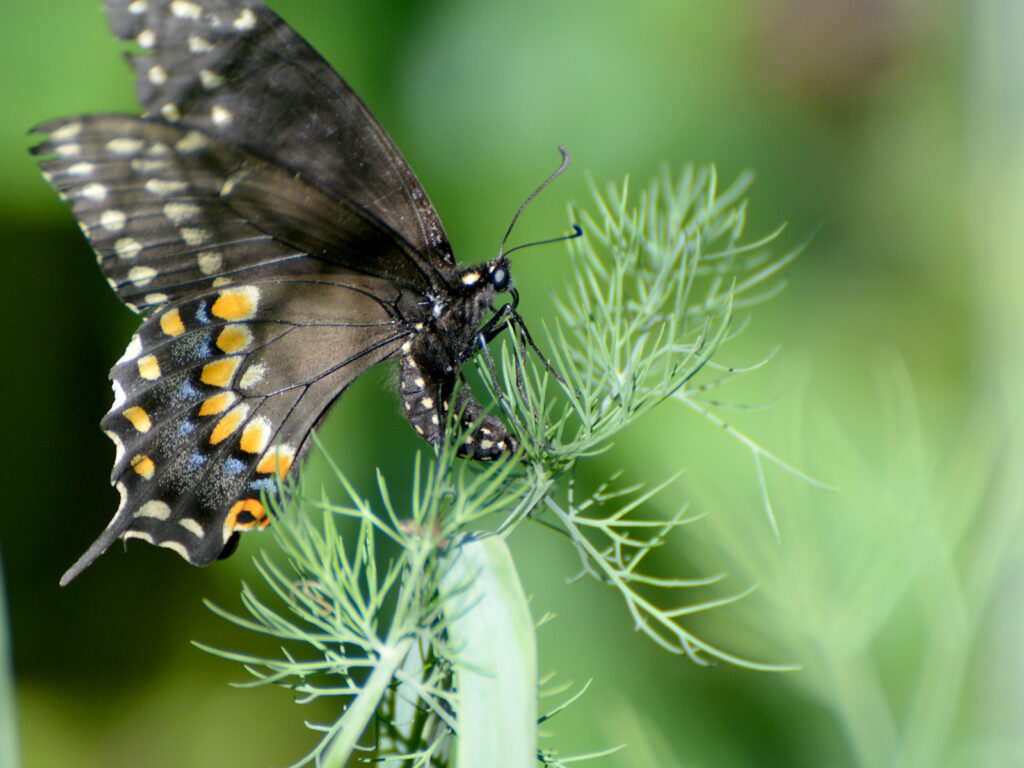
We’ve been planting parsley, dill, and fennel for many years — partly for our own use and partly for black swallowtails. We noticed the swallowtails laying eggs on dill more than on the others, but that may be because the dill was in a more noticeable location and we had much more of it since it generously self-sows.
One thing we were curious about, though, was why black swallowtails were using these non-native plants as their host plants. What did they use before these plants were brought to our continent?
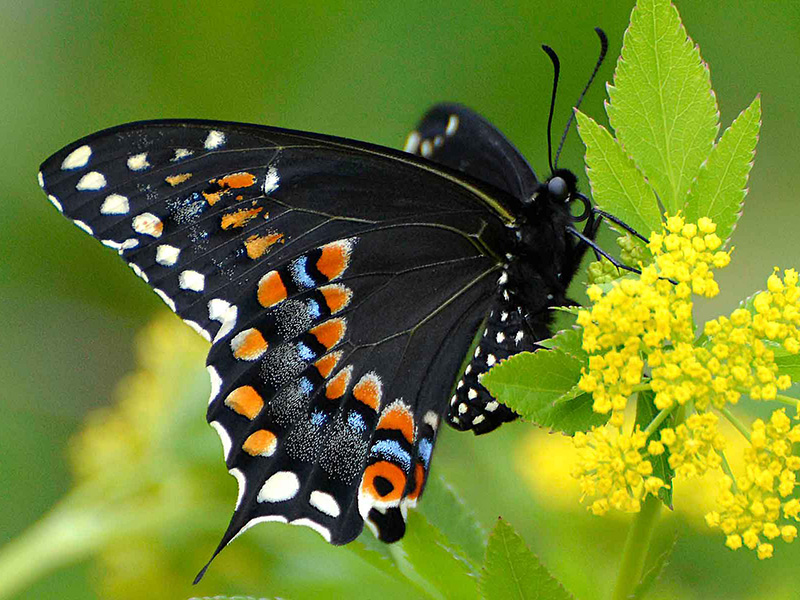
The question was answered when I read that golden alexanders (Zizia aurea) were actually the native host plant, but since the other plants were closely related, they could also use these more commonly available, though non-native, plants.
Looking back through my old photos, I discovered this photo, which I had taken simply because it showed a butterfly getting nectar. Now I realize she had a more important reason for landing there!
Life stages
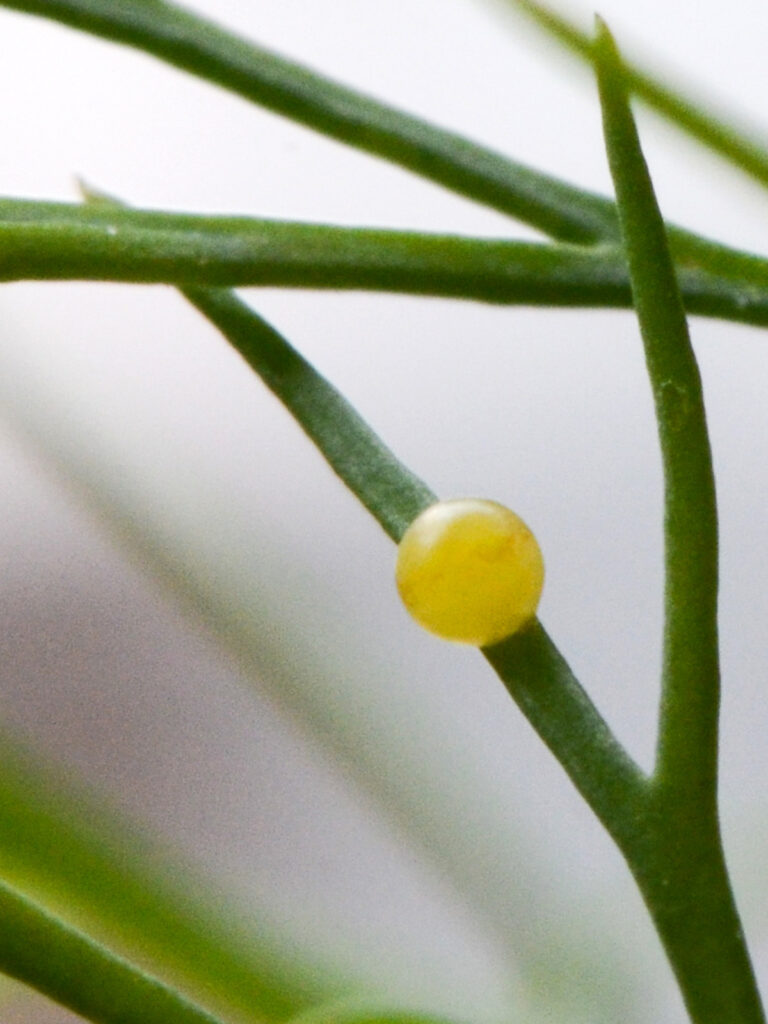
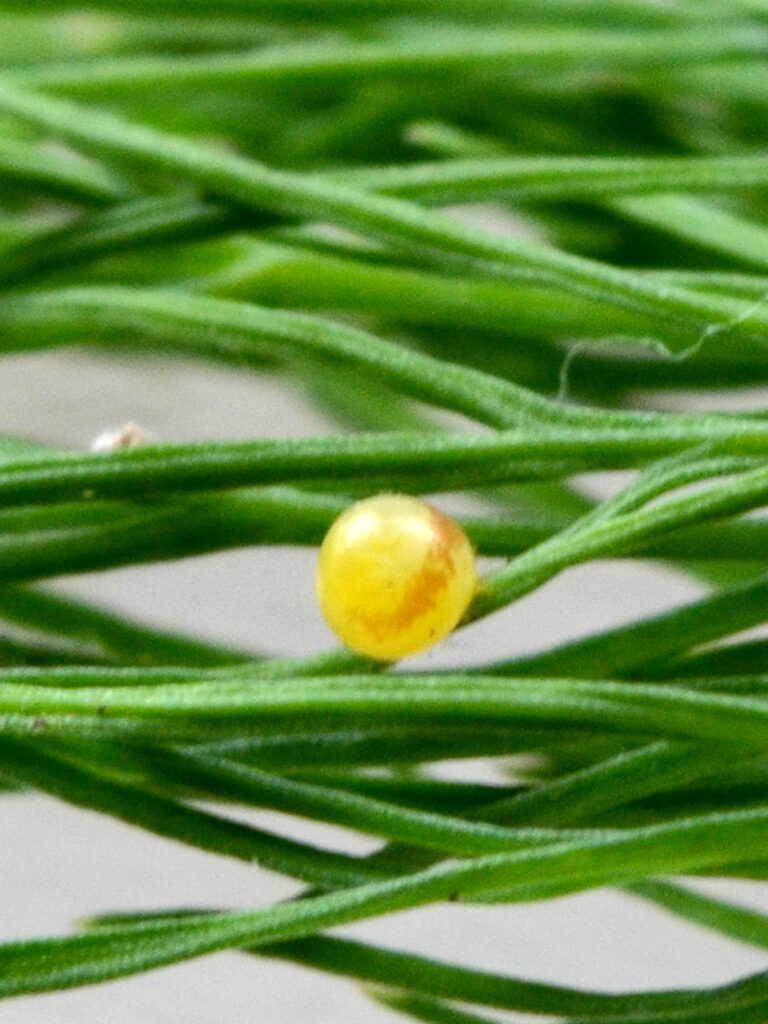
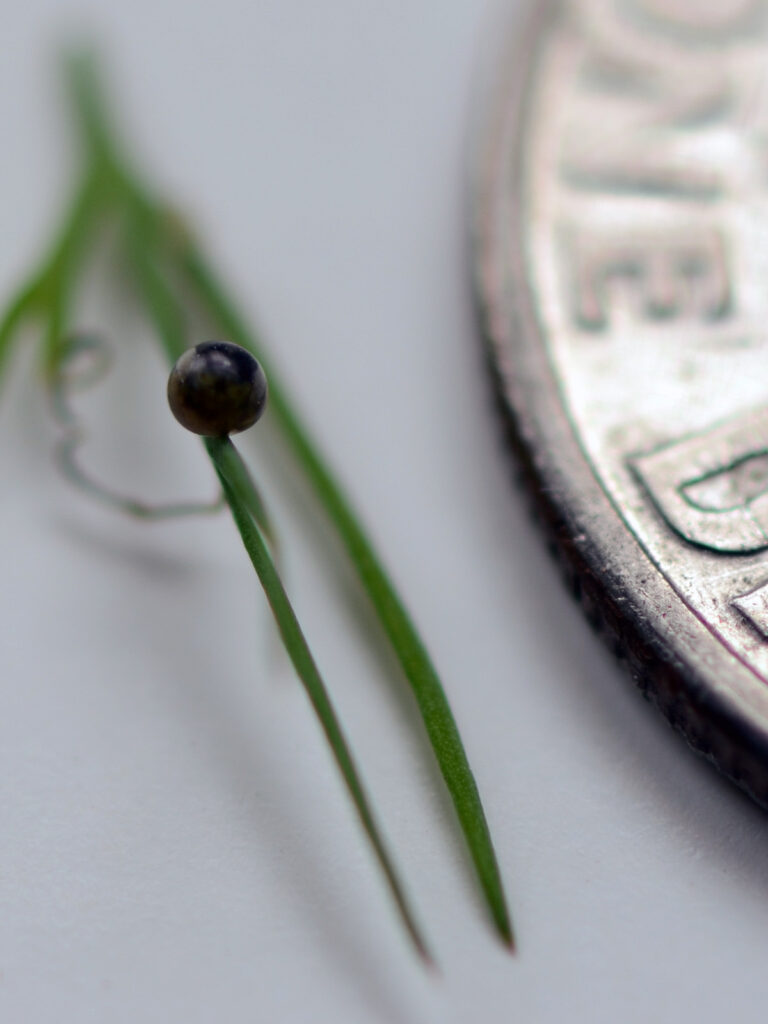
The first image is what the egg looks like when it’s first laid. To get an idea of its size, consider that those big green “branches” are the tiny leaves of a dill plant! The second image shows the egg developing, and the last image shows the egg ready to hatch.
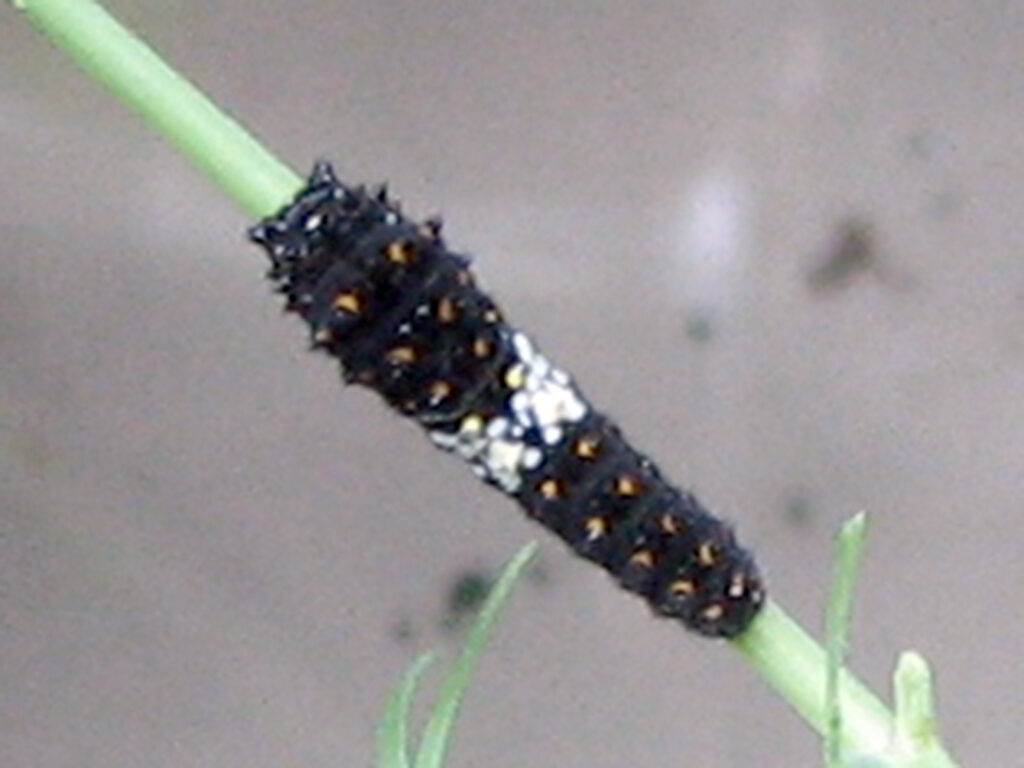
This is the first stage, and it’s still small, as you can see from the relative size of the dill leaf. It’s big, though, compared to the tiny egg it started as!
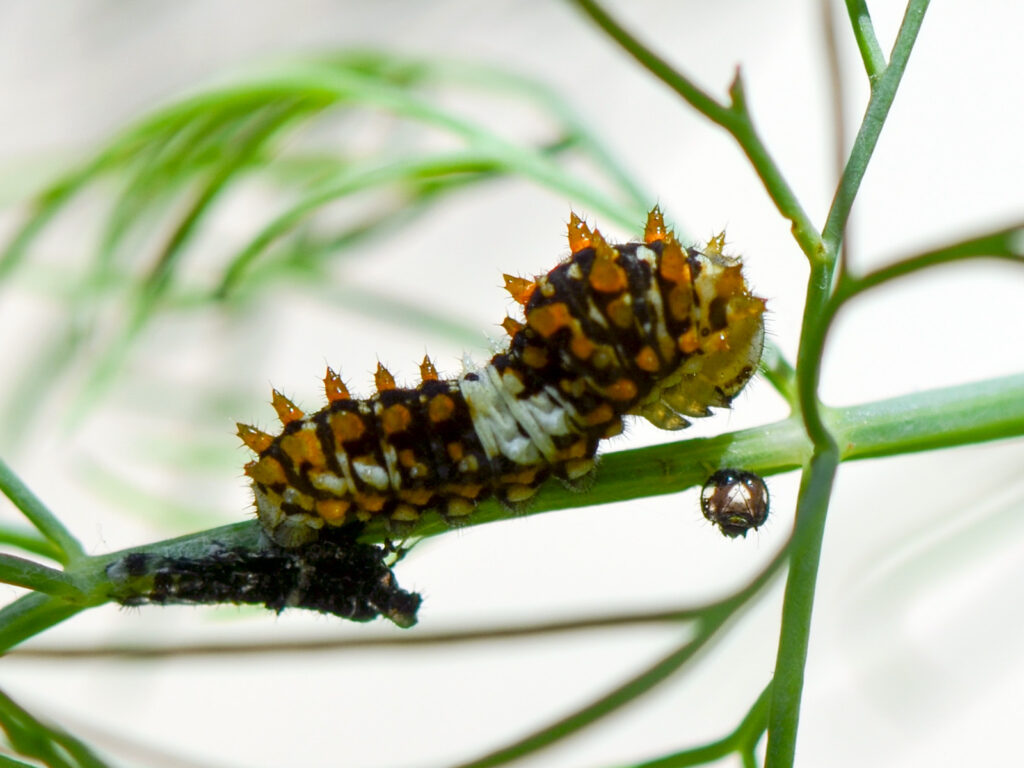
Caterpillars outgrow their skin a number of times. Each stage is known as an instar, and there are five of these stages. Generally they eat the skin, but the head piece (I call it their “helmet”) falls off. The old skin is on the left and the “helmet” on the right. I believe this is now the second instar. It’s still very tiny. (Compare the size of the dill!)
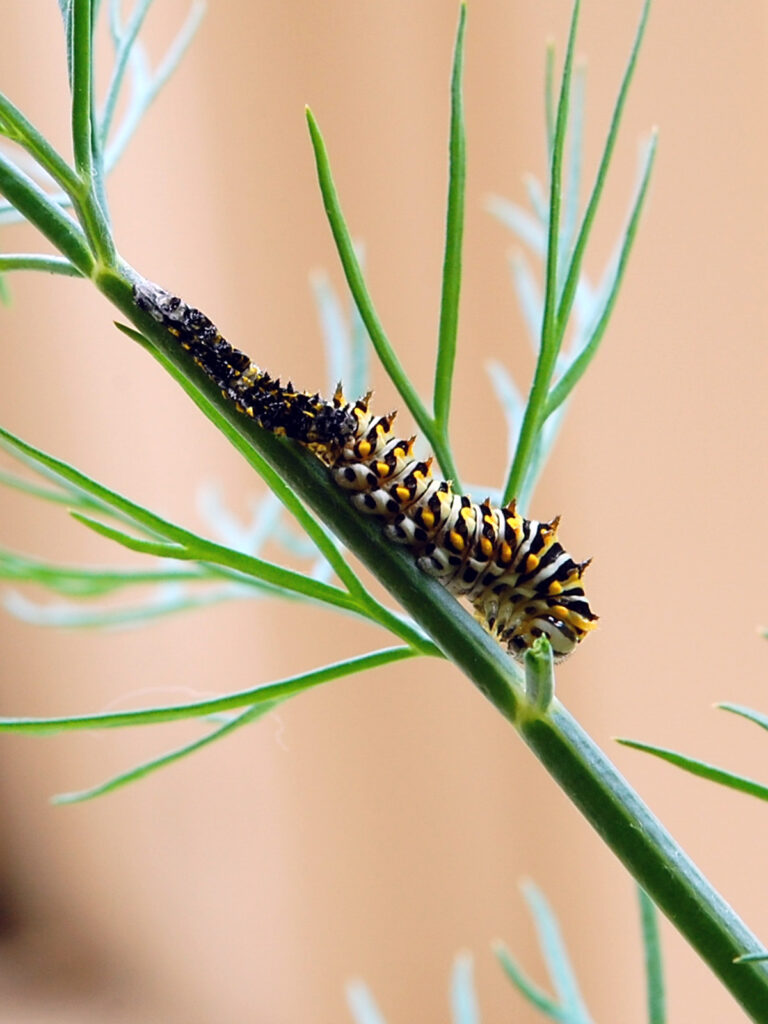
This caterpillar has just molted. You can see the discarded skin at the left trailing out behind him.
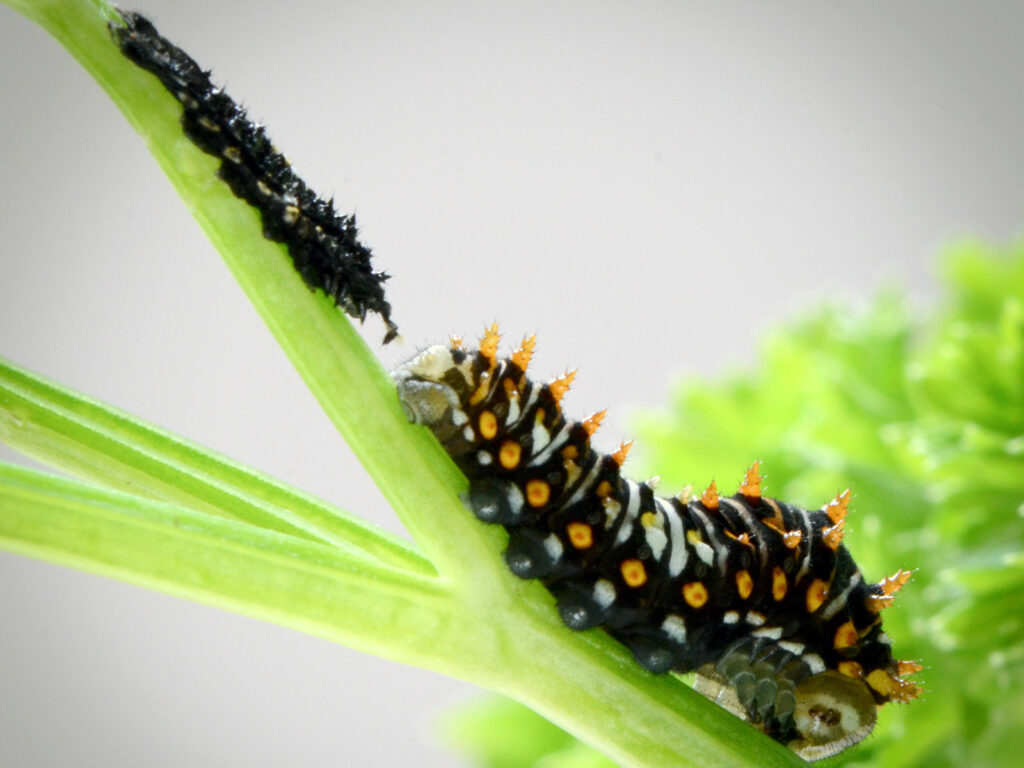
It’s turning around to face the shed skin.
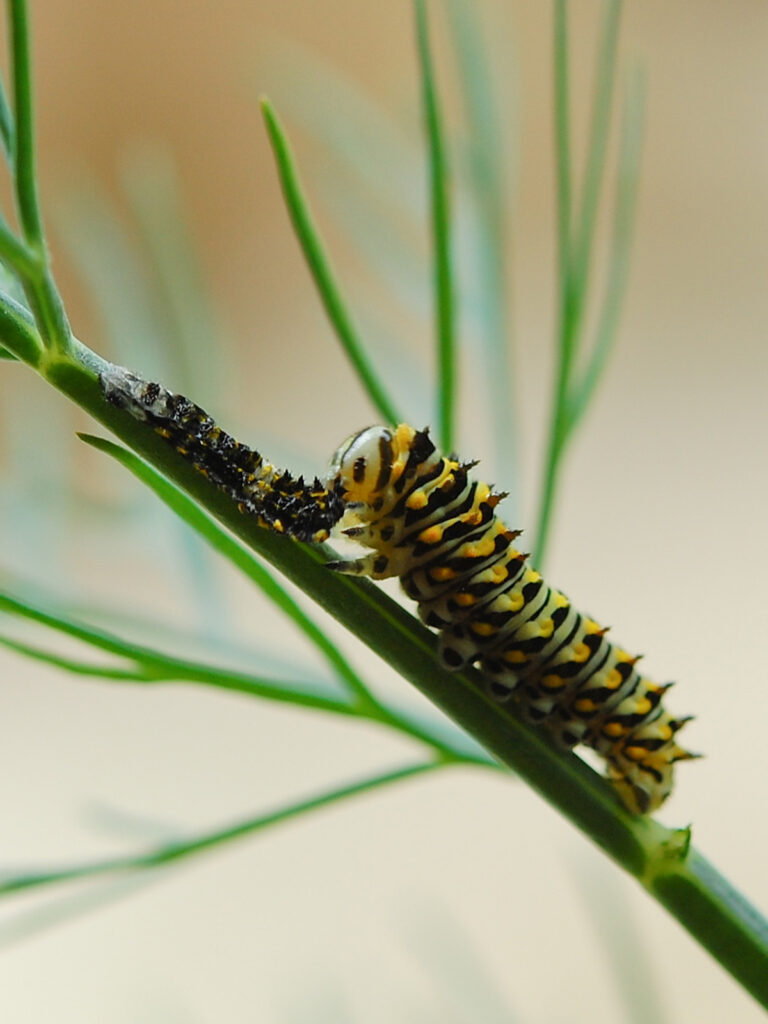
And now it’s eating its old skin! Waste not, want not, I guess. It’s just one way that nature infinitely recycles things without creating pollution. I imagine the caterpillar is retrieving nutrients from the skin, but I haven’t yet looked into the details about this process. Notice how its head is not yet “hardened.”
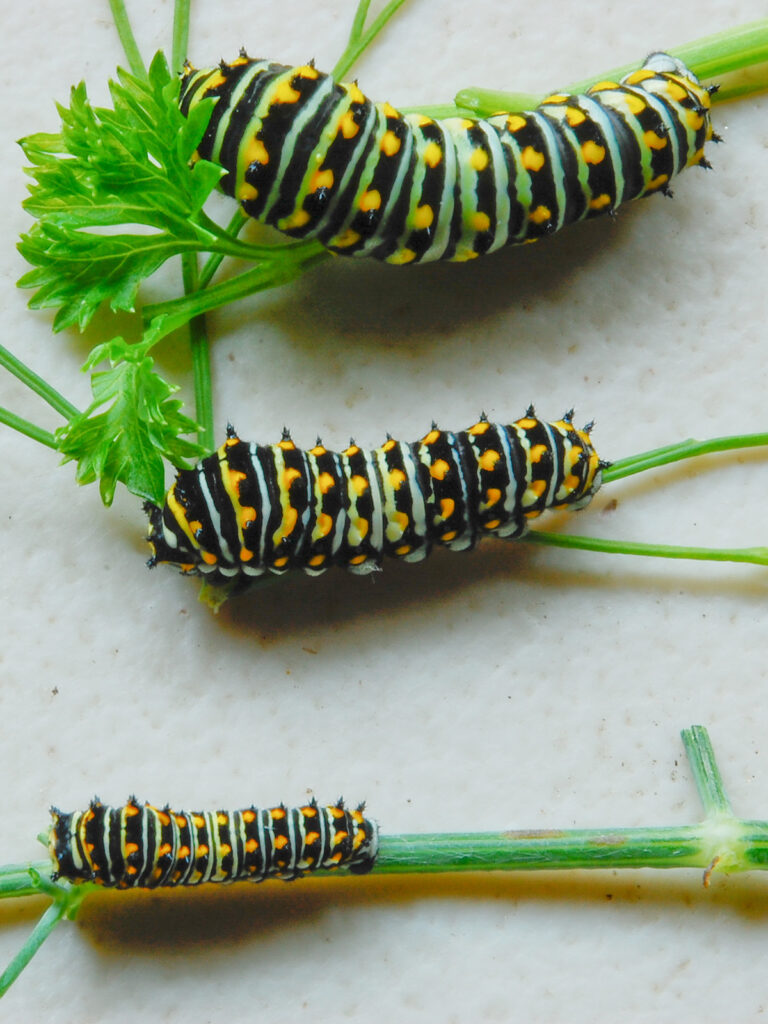
Here are black swallowtail caterpillars at three different stages (“instars”).
Unlike monarchs, which look pretty much the same (though not identical) at each instar (i.e. larval stage of growth), swallowtails look a bit different at each stage.
In this case, it’s eating parsley, another of its (non-native) larval host plants.
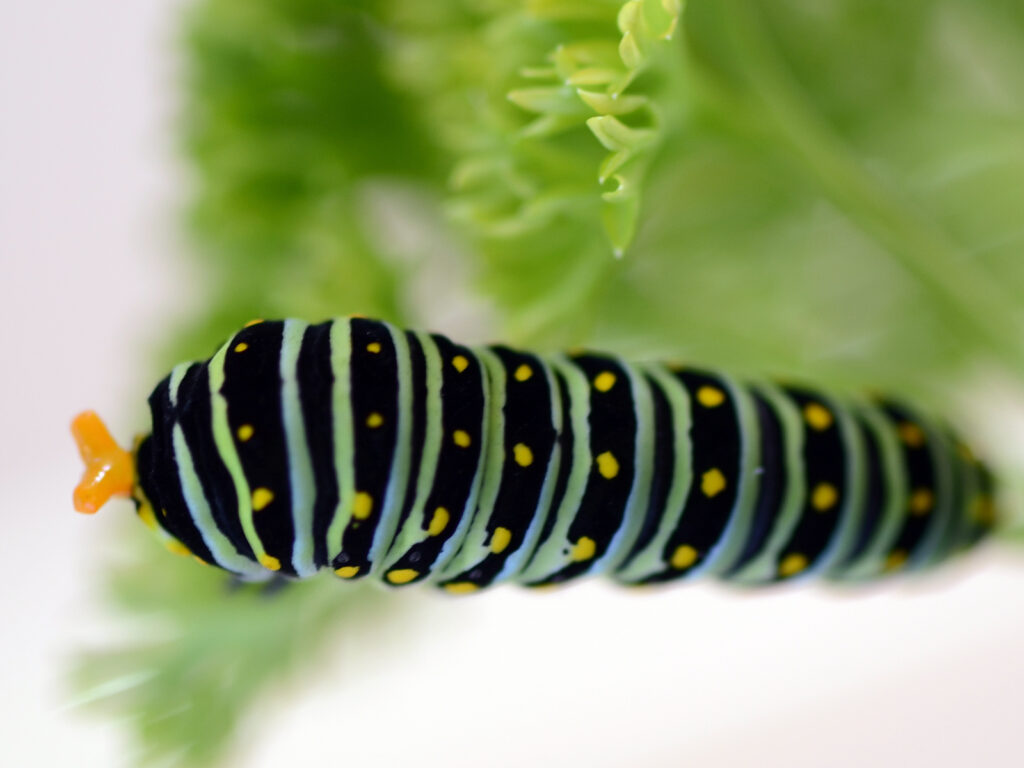
The orange forked part is the osmeterium, a defensive organ. When it feels threatened, it emerges and releases a foul smell. All caterpillars in this family have this “device.”
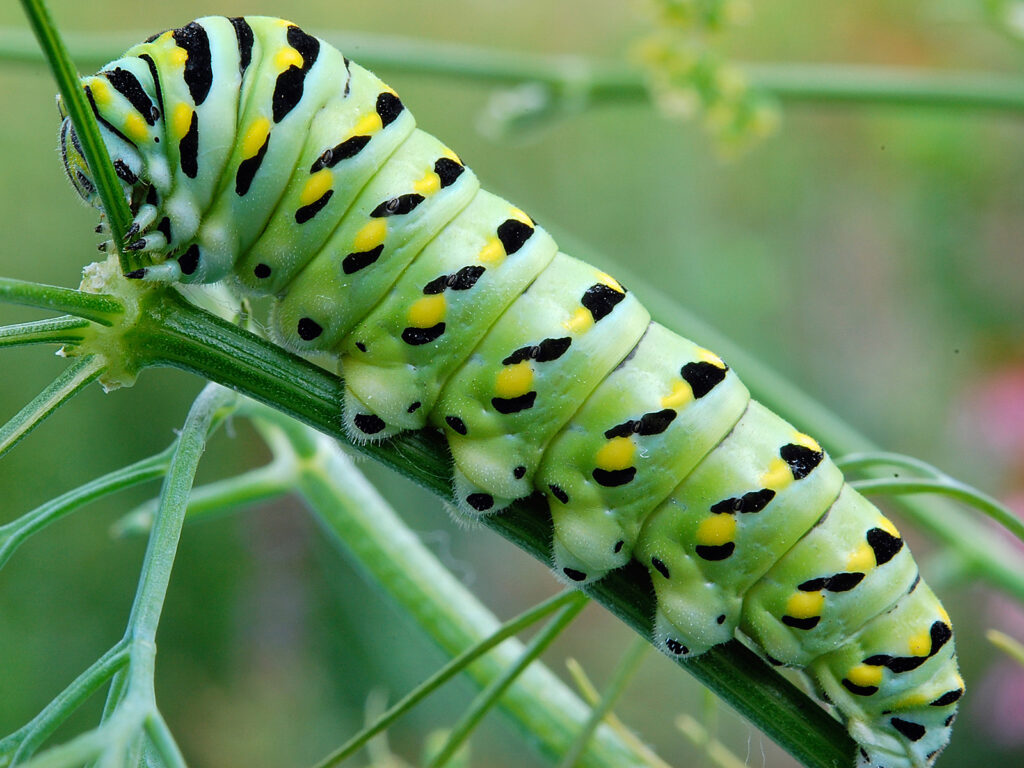
This is a large black swallowtail caterpillar — about as large as it will get before beginning its transformation.
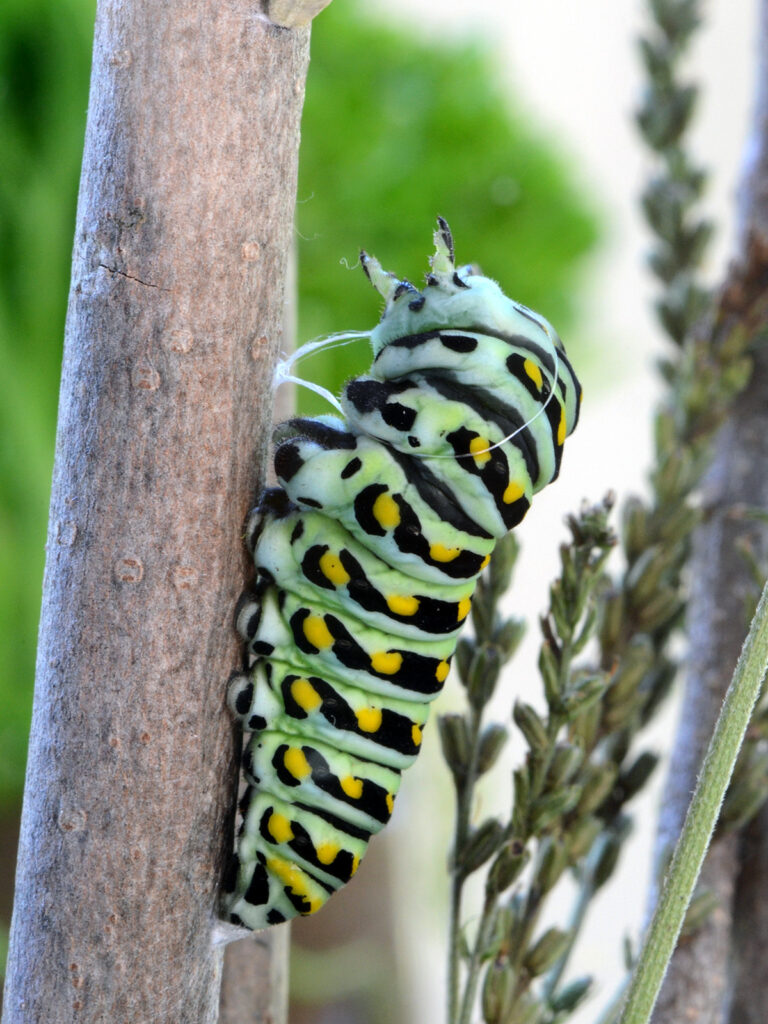
Notice how it has attached its bottom end to the stick. It’s also spun a silk “harness” at the top. It’s always interesting watching how they get into their “harness.” They’re certainly flexible!
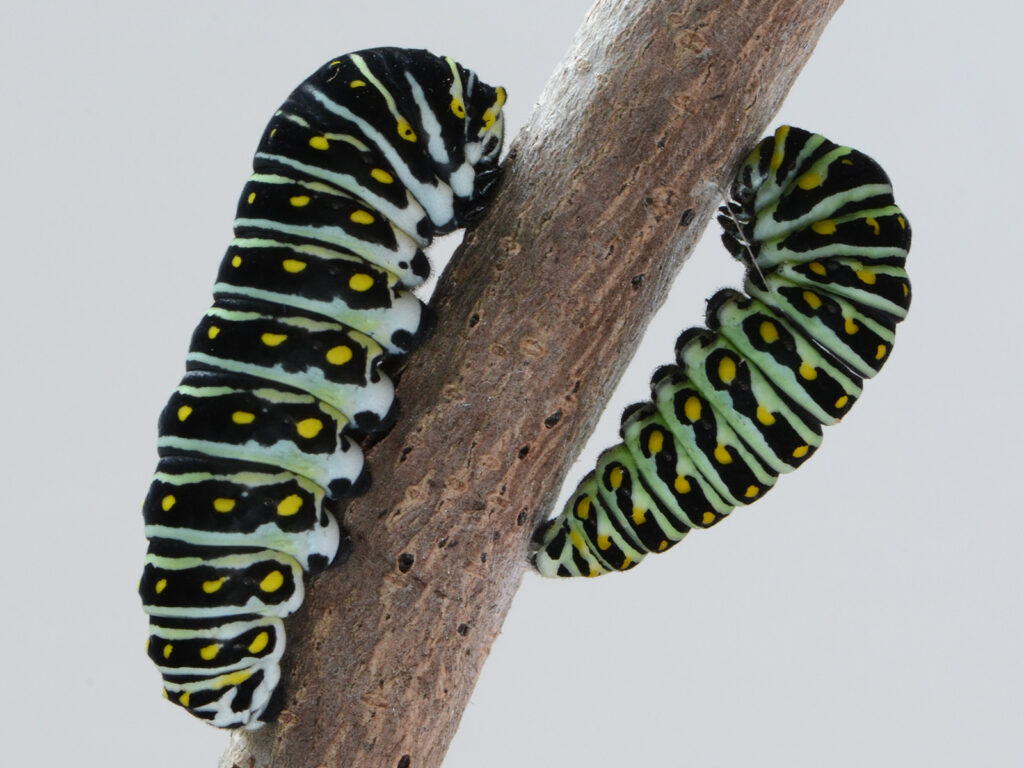
Here are two different stages. The one on the left will soon be like the one on the right.
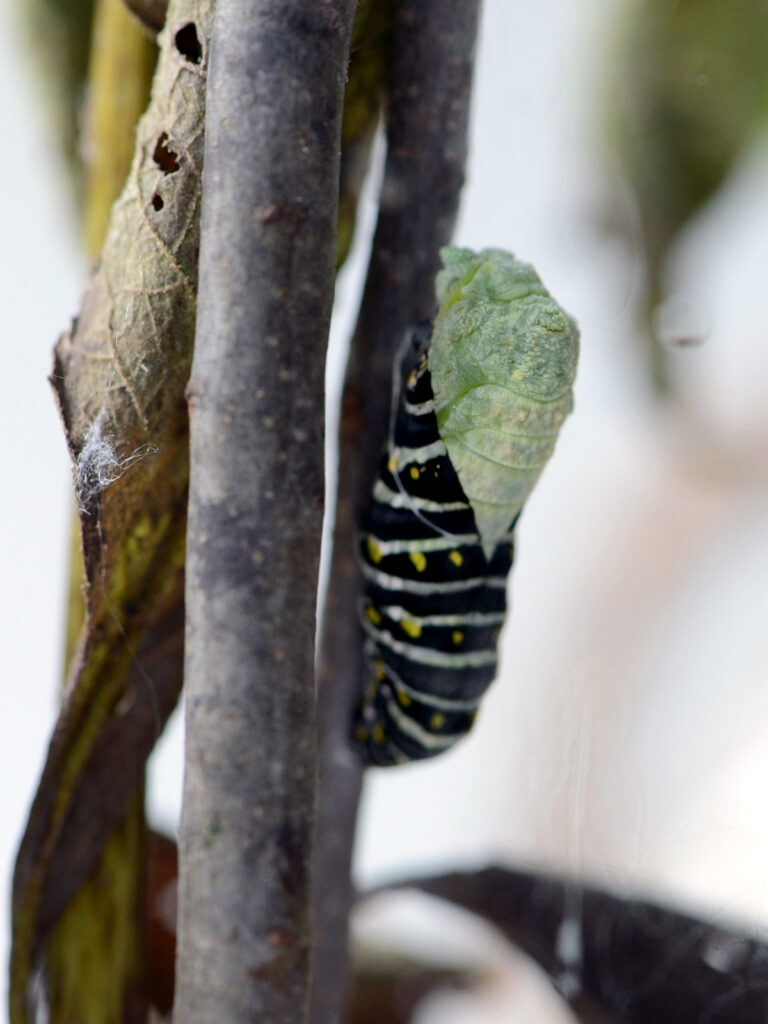
And, unlike the myth of butterflies making cocoons (unfortunately passed on to our kids with The Very Hungry Caterpillar book!), there is no “cocoon.” The skin splits and the chrysalis appears.
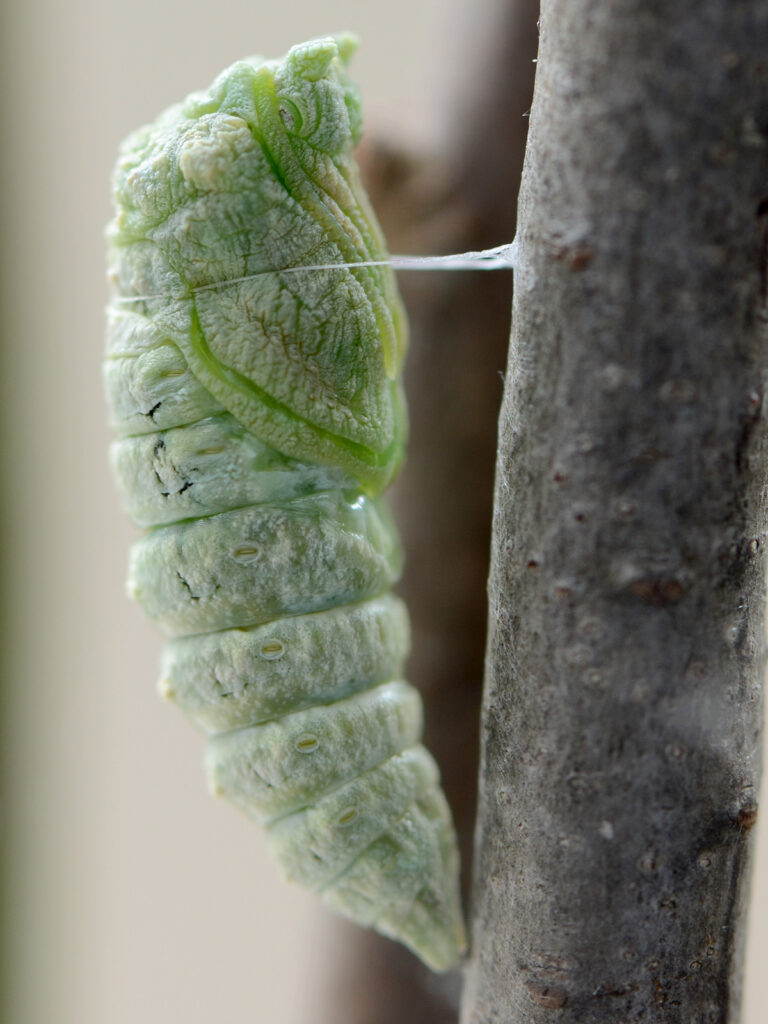
Newly pupated
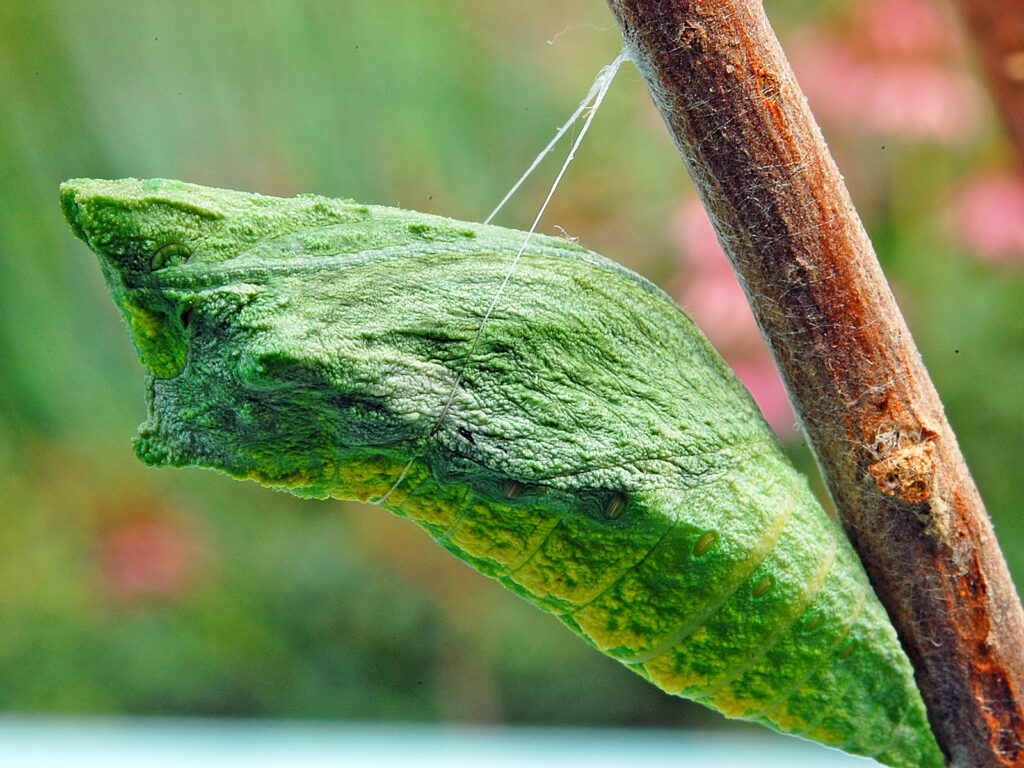
This is the green form. Note the “harness” it uses to attach itself. Each of the kinds of caterpillars I’ve raised has a different way of going about this transformation.
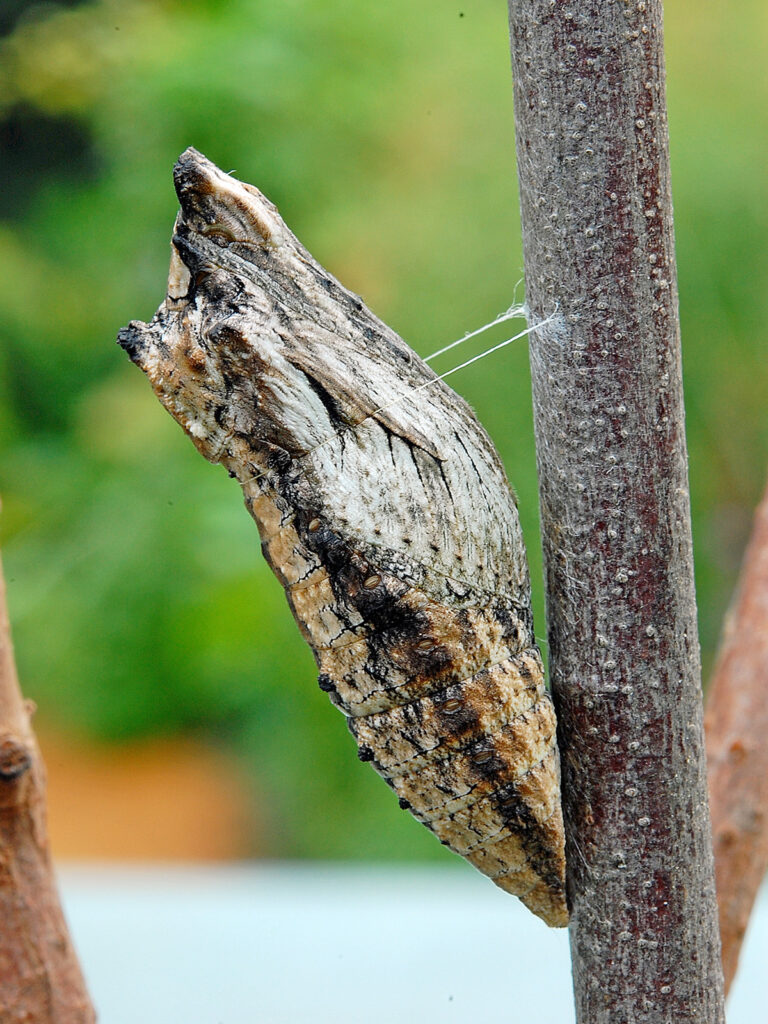
Here’s the brown form. Mass Audubon suggests that “the color variation has been shown to relate to the season in which pupation will occur and the surface on which it takes place, i.e. the chrysalis will tend to be brown in winter and on rough surfaces and green in summer and on smooth surfaces to blend in with the most likely background.“
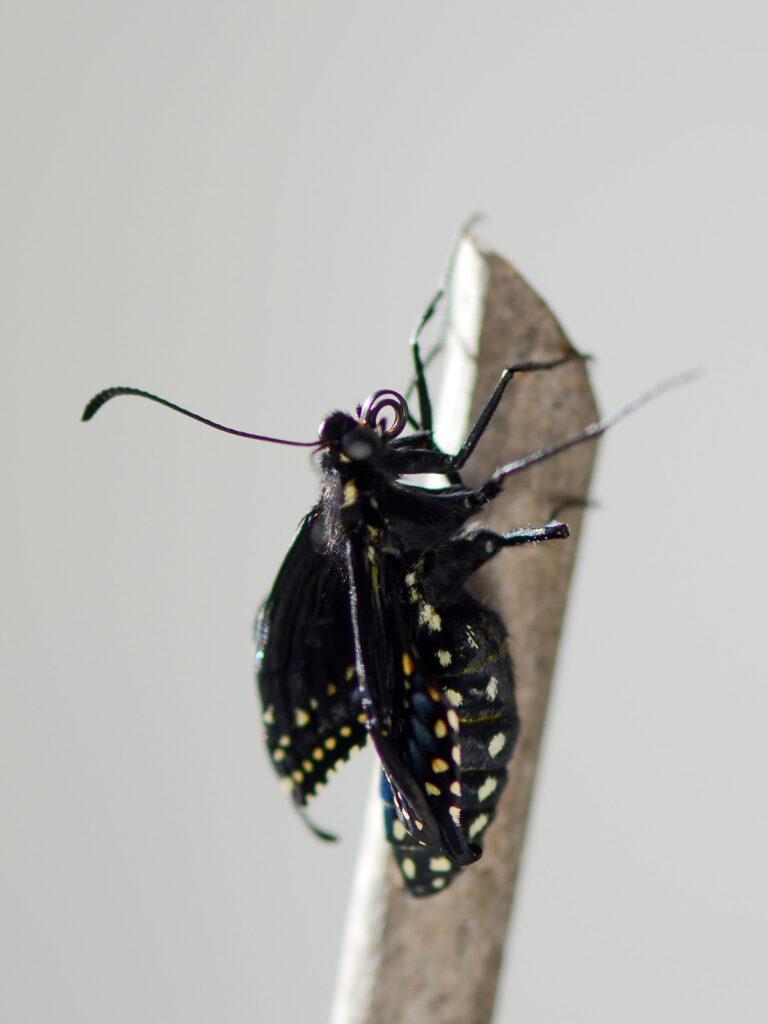
The black swallowtail butterfly emerges!
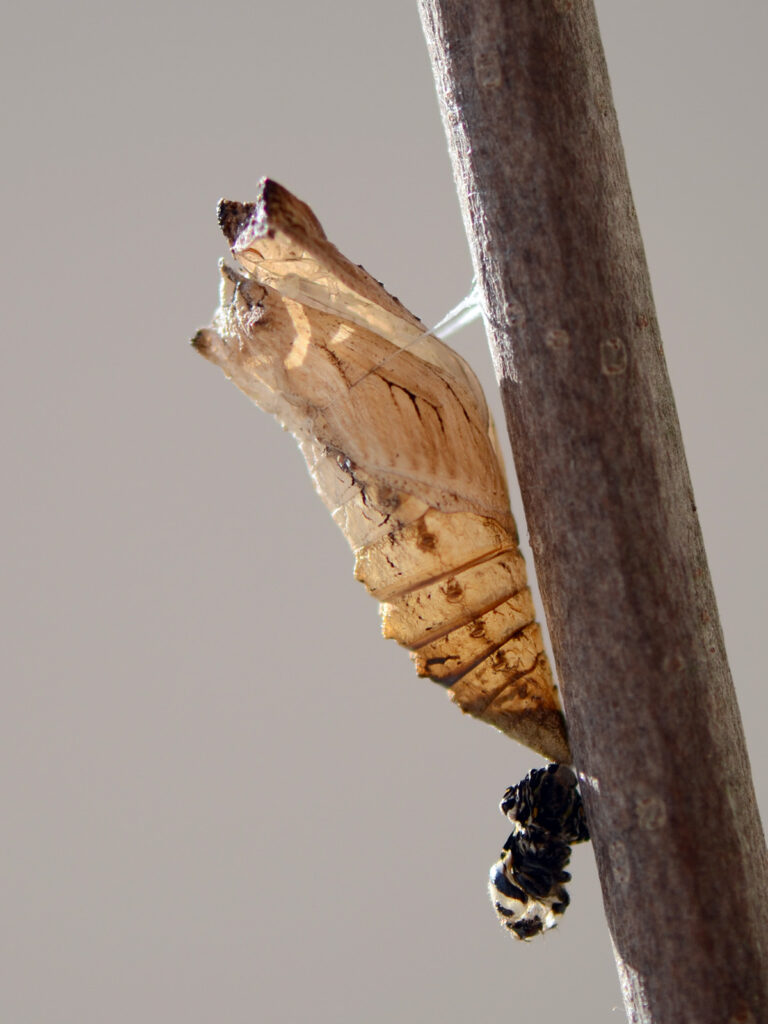
This papery shell is the empty chrysalis shell (the “exuvia”) after the butterfly has closed.
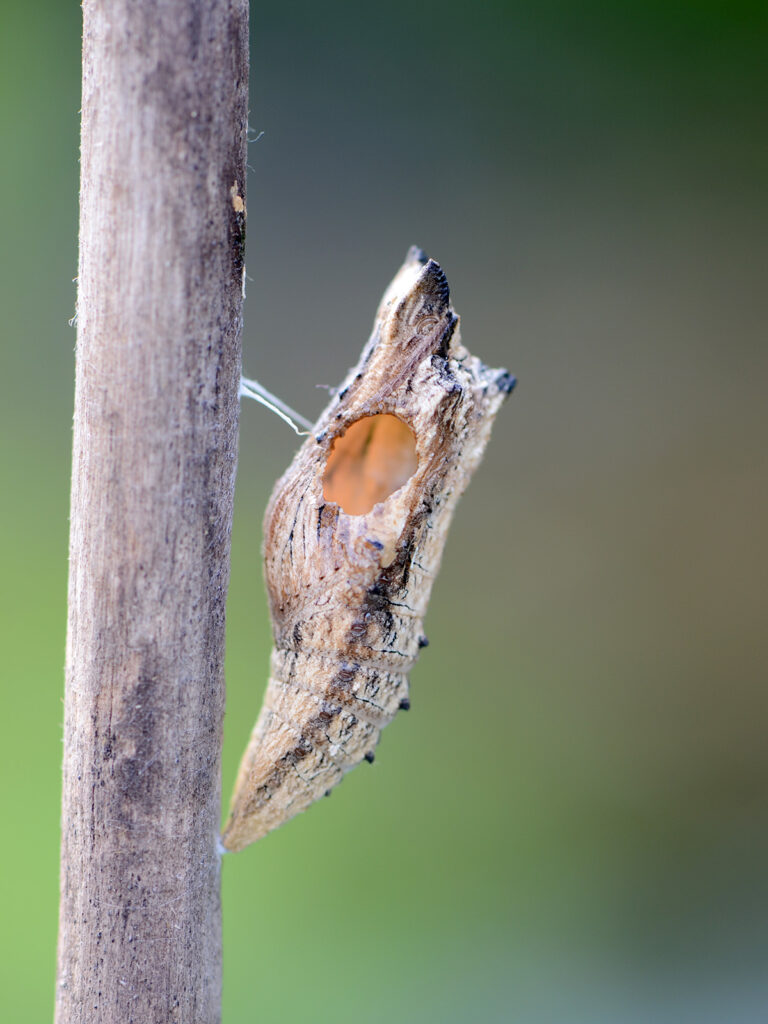
They don’t all make it. This one was parasitized and the parasite emerged through the hole after feeding on the caterpillar.
This loss is natural. What is NOT natural is acres and acres of non-native ornamental plants rather than native host plants that would allow for large numbers of caterpillars being laid.
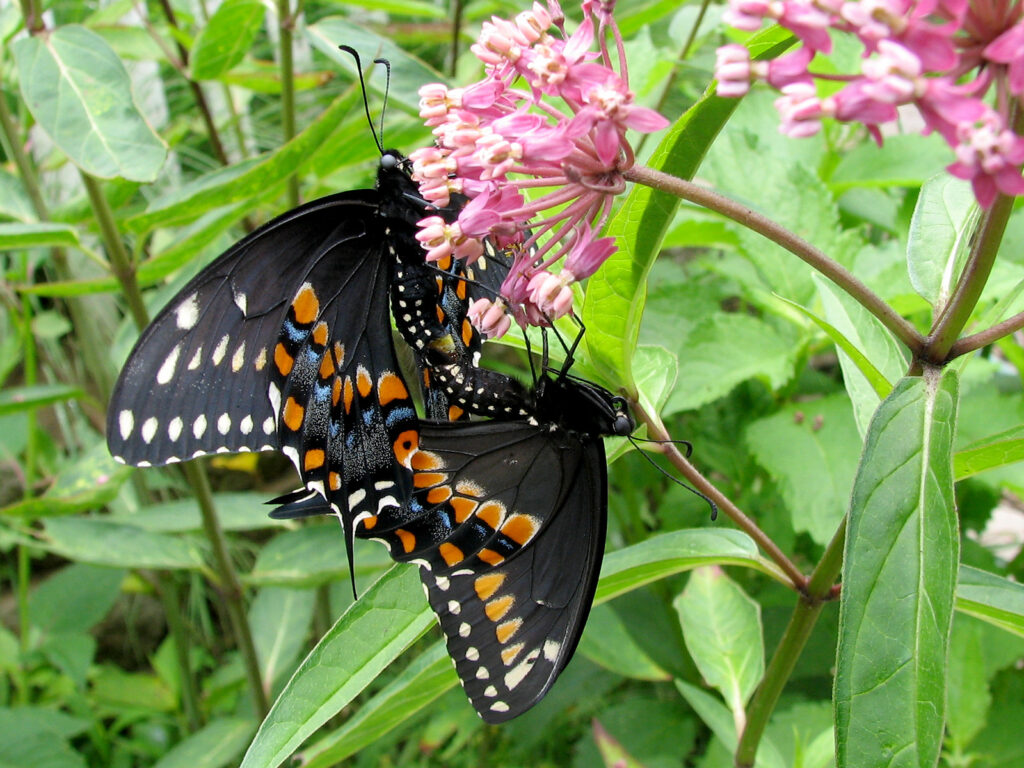
Shortly after releasing these butterflies, which I had raised inside, I found them mating on a swamp milkweed. This isn’t a host plant for swallowtails, though, so the female will lay her eggs elsewhere.
Overwintering
The first year we raised black swallowtails, we collected a second batch of eggs after the first batch was successfully released. After they became pupae, though, we waited and waited for them to emerge as butterflies.
After a few weeks, we knew something was odd since there was no change. We did some research and discovered that the last generation overwinters as pupae!
Now what to do? The best I could figure out was to put them on the screen porch on the north side of the house for the winter. Was this going to be similar enough to the kind of environment they would have sought out on their own? I worried about them all winter and occasionally checked on them. What I was going to do if there were some undefinable problem I don’t know.
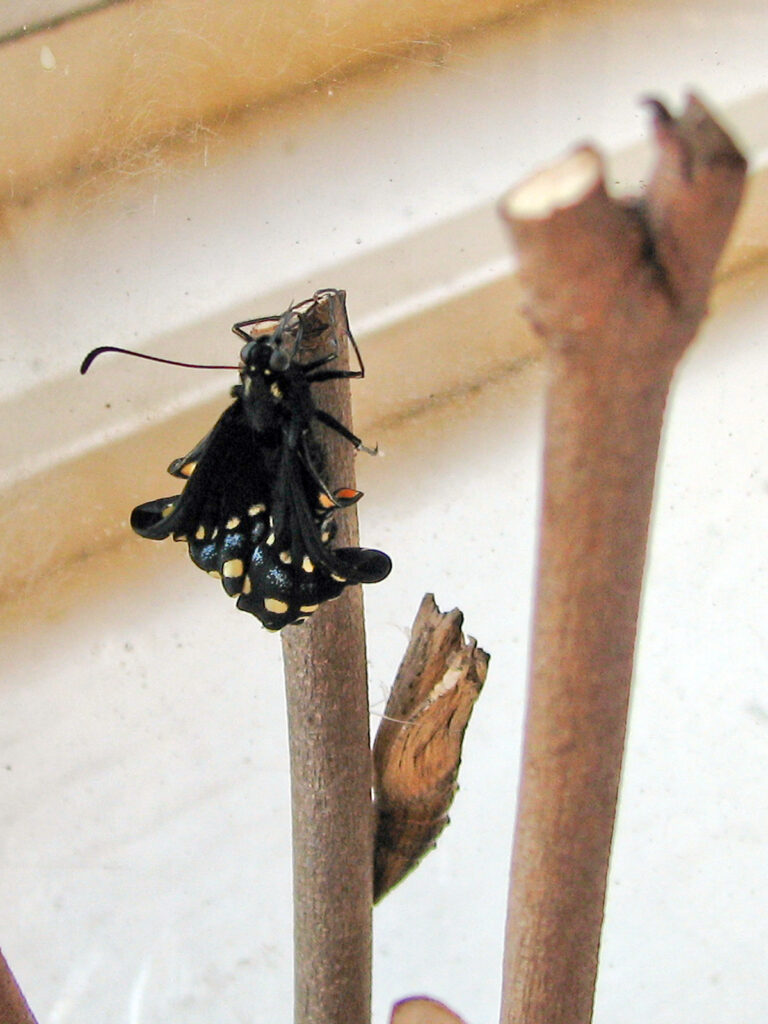
Spring came and I watched to see what would happen. It seemed unlikely that these pupae could have possibly survived winter on the porch, but one day, they just emerged! At that point, they had been pupae for about nine months. I was glad they survived, but didn’t really want to do that again.
I vowed to stop collecting eggs after the first batch. However, the second year it happened again. I didn’t think the overwintering generation would start so soon.
They again overwintered on the screen porch, and I checked them daily when the temperature started to reach 60°F. in the spring. Amazingly, after nine months, including a winter on our screen porch, the first one emerged on May 19. The other three emerged during the course of the following week. After these successes, I now trust the process and collect a couple of these late eggs, confident that they’ll survive.
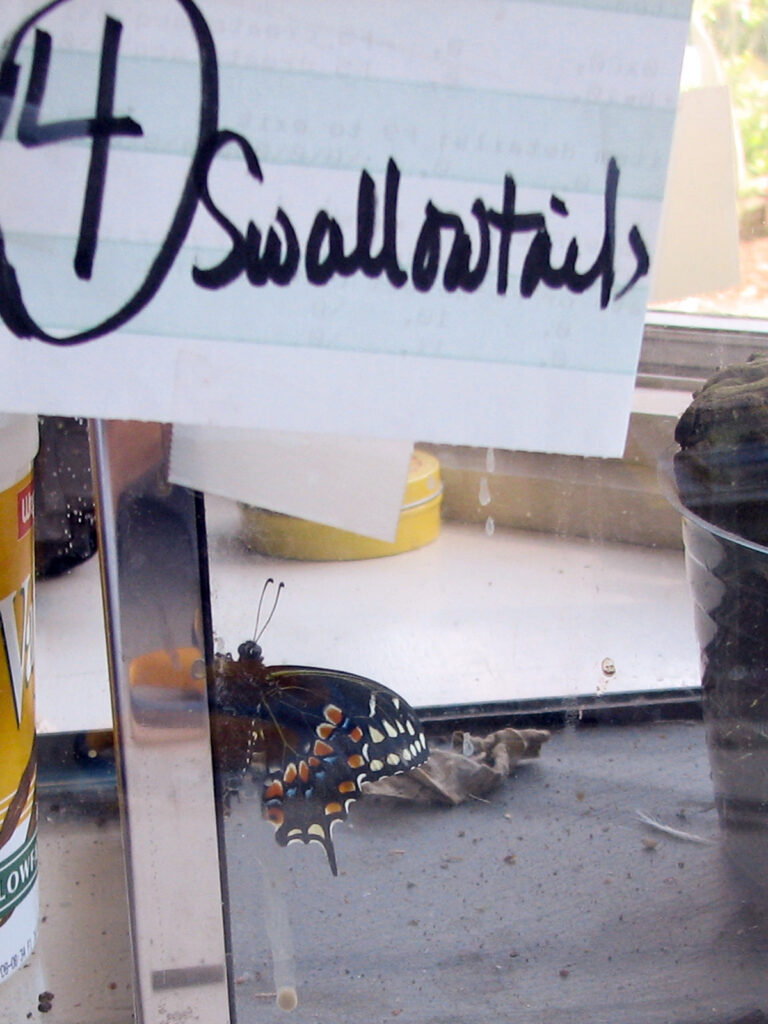
I did learn to label the tank as to what was inside, since it’s not always easy to remember by the time spring comes around, and I wouldn’t want to miss any.
But, as you can see, they again survived and emerged (“eclosed”) in the spring!
Identifying male and female black swallowtails
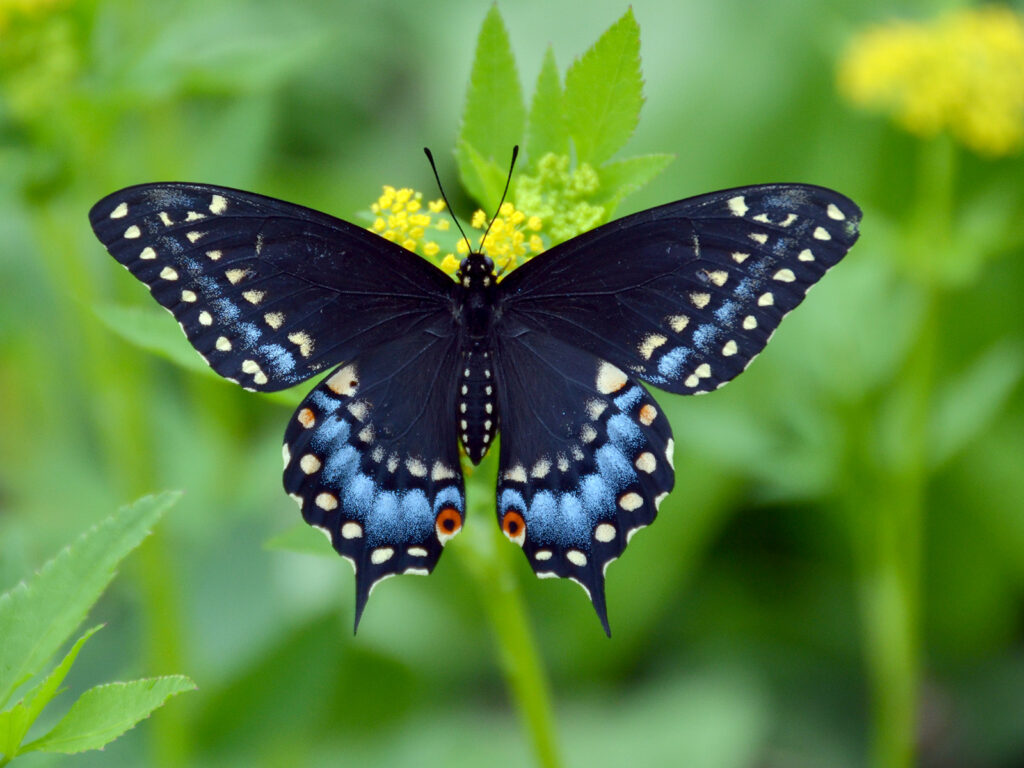
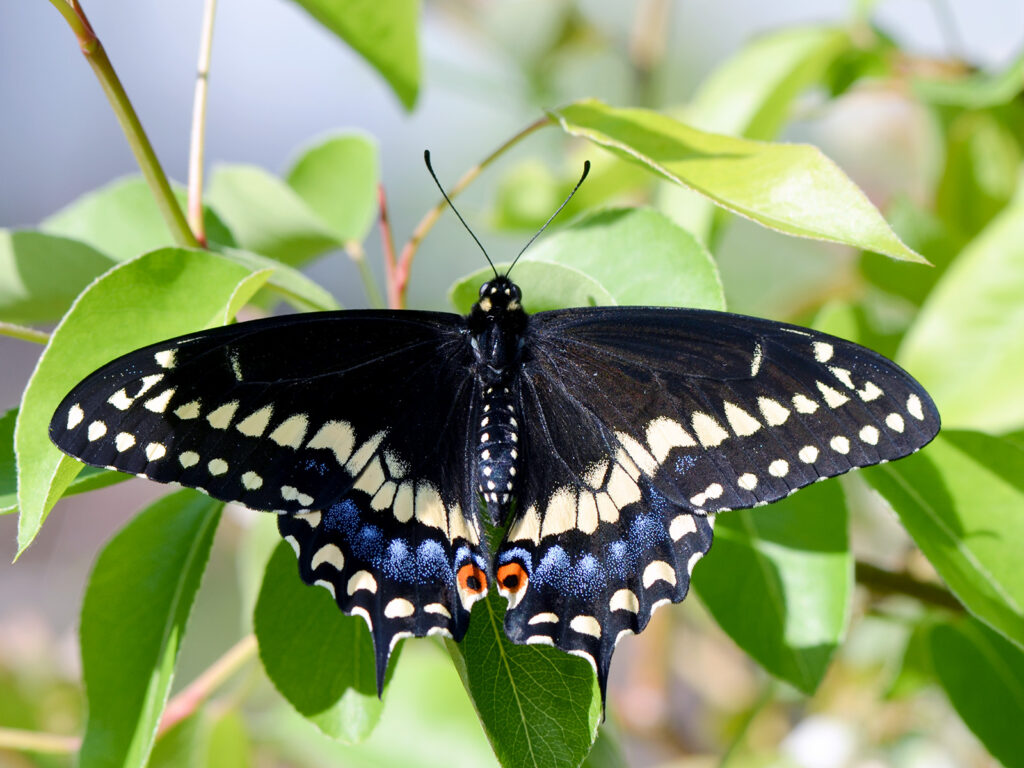
The female has more blue on her wings and the male has more yellow.
Resources
- Raising Butterflies:
- Black swallowtails – I have a different system, but this approach might work for you.
- Joyful Butterfly:
- Back Yard Biology:
Mass Audubon: “CHRYSALIS: Brown or green ; the color variation has been shown to relate to the season in which pupation will occur and the surface on which it takes place, i.e. the chrysalis will tend to be brown in winter and on rough surfaces and green in summer and on smooth surfaces to blend in with the most likely background.”
I’ll observe my black swallowtails to see if they follow this pattern.
Reflections
Each species is a masterpiece, a creation assembled with extreme care and genius.
~ Edward O. Wilson
